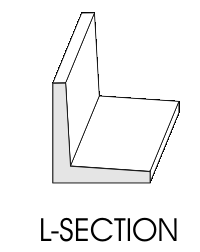In this post, we will learn the types of beams used in construction. Beams can be classified based on support, material, cross-Section, geometry, equilibrium condition, etc.
The beam is a key component of a structure. It is almost impossible to make concrete frame buildings without beams. Beam transfer the vertical loads, shear forces, and bending moments.
Various types of beams are used in the field of construction. In this blog post, I have described various types of beams used in construction based on support, material, cross-Section, geometry, equilibrium condition, etc.
Table of Contents
Classification of Beam Based on Support
1. Simply Supported Beam
The simply supported beam is supported by pinned support at one end and roller support at another end. This type of beam is free to rotate.

2. Fixed Beam
The fixed beam is fixed from both sides. It is fixed from both ends to resist rotation. Only moments can occur on fixed ends.

3. Cantilever Beam
A cantilever beam is free at one end and free at another end. This type of beam distributes the load back to the support where it is forced against a moment and shear stress. Cantilever beams permit the creation of a bay window, balconies, cantilever slabs, and some bridges.

4. Continuous Beam
If the beam is supported by more than two supports, it is known as a continuous beam.

Classification of Beam Based on Materials
5. Reinforced Concrete Beam
Reinforced Concrete Beam consists of plain cement concrete and reinforcement bars. This type of beam is most commonly used in building construction. You can see this type of beam in your homes.

6. Steel Beam
Steel beams are used in steel structures such as warehouses, towers, industrial buildings, and trusses. Steel I-beams are most commonly used because of high second moments of area, which means they are very stiff in respect to their cross-sectional area and hence can support a high load without excessive sagging.

7. Timber Beams
The timber beam is made of wood. This type of beam is very rarely used nowadays. Timber beams were widely used in wooden buildings in the past. As the demand for the R.C.C building increased, utilization of timber beams declined. The timber beam is not much durable.

8. Composite Beam
This type of beam comprises two materials like steel and concrete. Sometimes more than two materials are used.

Classification of Beam Based on Cross-Section
9. Rectangular Beam
A typical reinforcement concrete beam has a rectangular cross-section. This type of beam can be a singly reinforced beam or a doubly reinforced beam.

10. T-section Beam
As you can see from the below figure, this type of beam has a T cross-section. T beam cast monolithically with the slab.

11. L-section beam
L section beam is also cast monolithically with the slab.

Classification of Beam Based on Geometry
12. Straight Beam
This type of beam has a straight profile and most of the beams in structures are straight beams. They are easy to construct.

13. Curved Beam
Curved beams have a curve-type profile. This type of beam is used to construct arches and circular buildings.

14. Tapered Beam
This type of beam has a tapered cross-section. It is very rarely used in the field of construction.

Classification of Beam Based on Equilibrium Condition
15. Statically Determinate Beam
The statically determinate beam is used to solve equilibrium load conditions. If unknown reactions are equal to the number of equations. then it is called a statically determinate beam.

16. Statically Indeterminate Beam
For a statically indeterminate beam, equilibrium conditions are not sufficient to solve reactions. Hence, the analysis of this type of beam is more difficult than that of statically determinate beams.

